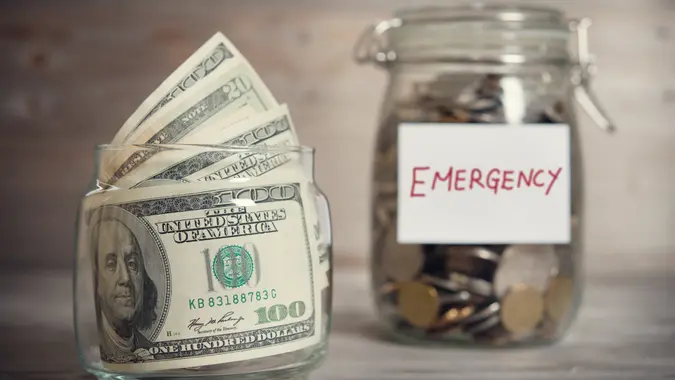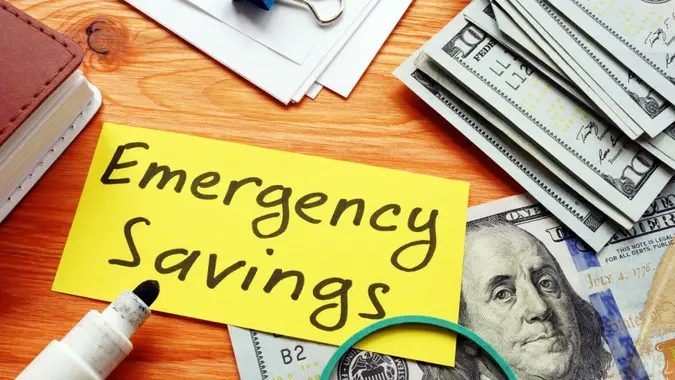You Should Have $33K in Your Emergency Savings Fund: Here’s How To Get There

Commitment to Our Readers
GOBankingRates' editorial team is committed to bringing you unbiased reviews and information. We use data-driven methodologies to evaluate financial products and services - our reviews and ratings are not influenced by advertisers. You can read more about our editorial guidelines and our products and services review methodology.

20 Years
Helping You Live Richer

Reviewed
by Experts

Trusted by
Millions of Readers
A common financial rule of thumb is to keep three to six months’ worth of living expenses in savings to serve as an emergency fund. For the average family, that now amounts to over $33,000, according to an Investopedia analysis.
To find the target emergency savings number, Investopedia analyzed the average cost of six months’ worth of household expenses frequently included in emergency funds for U.S. residents. The $33,110.68 total breaks down to $10,754.63 for medical care, $10,250.00 for car-related costs, $9,137.17 for housing and utilities and $2,968.88 for groceries.
“Thirty-three thousand dollars might sound like a lot, but it’s a lifeline during life’s stressful times to cover unexpected expenses like losing a job or a major repair,” said Megan Slatter, wealth advisor at Crewe Advisors in Salt Lake City. “It also isn’t a magic number — it’s based on six months of expenses, which varies by household. Think of it as a flexible goal tailored to your personal financial situation.”
Here’s how to realistically save $33,000 for emergency expenses if that’s the goal that makes sense for you.
Start Small and Automate
Setting a savings goal of $33,000-plus can be intimidating, but the key is to break that number down into smaller goals.
“Starting from scratch can quickly become overwhelming,” Slatter said. “Think of it like climbing a mountain — take one step at a time. Start with a monthly goal.”
If you want to save $33,000 in a year, you would have to save $2,750 per month. If you want to build that amount up over five years, that amounts to $550 a month. Figure out how much you can reasonably save, and make it a point to stick to your savings goal each month.
“Automate your savings into an account dedicated only toward your emergency fund,” Slatter said. “Over time, you’ll see your fund grow as you make consistent deposits.”
How To Save for Emergencies While Working Toward Other Financial Goals
It can be hard to juggle competing financial priorities, such as building an emergency fund, paying down debt and saving for retirement.
“Balance is key,” Slatter said. “Start by tackling high-interest debt first, then build your emergency fund with steady, small contributions. Once you have a solid cushion, redirect those funds to retirement savings. It’s all about smart priorities and gradual but consistent progress.”
More From GOBankingRates
 Written by
Written by  Edited by
Edited by 

























